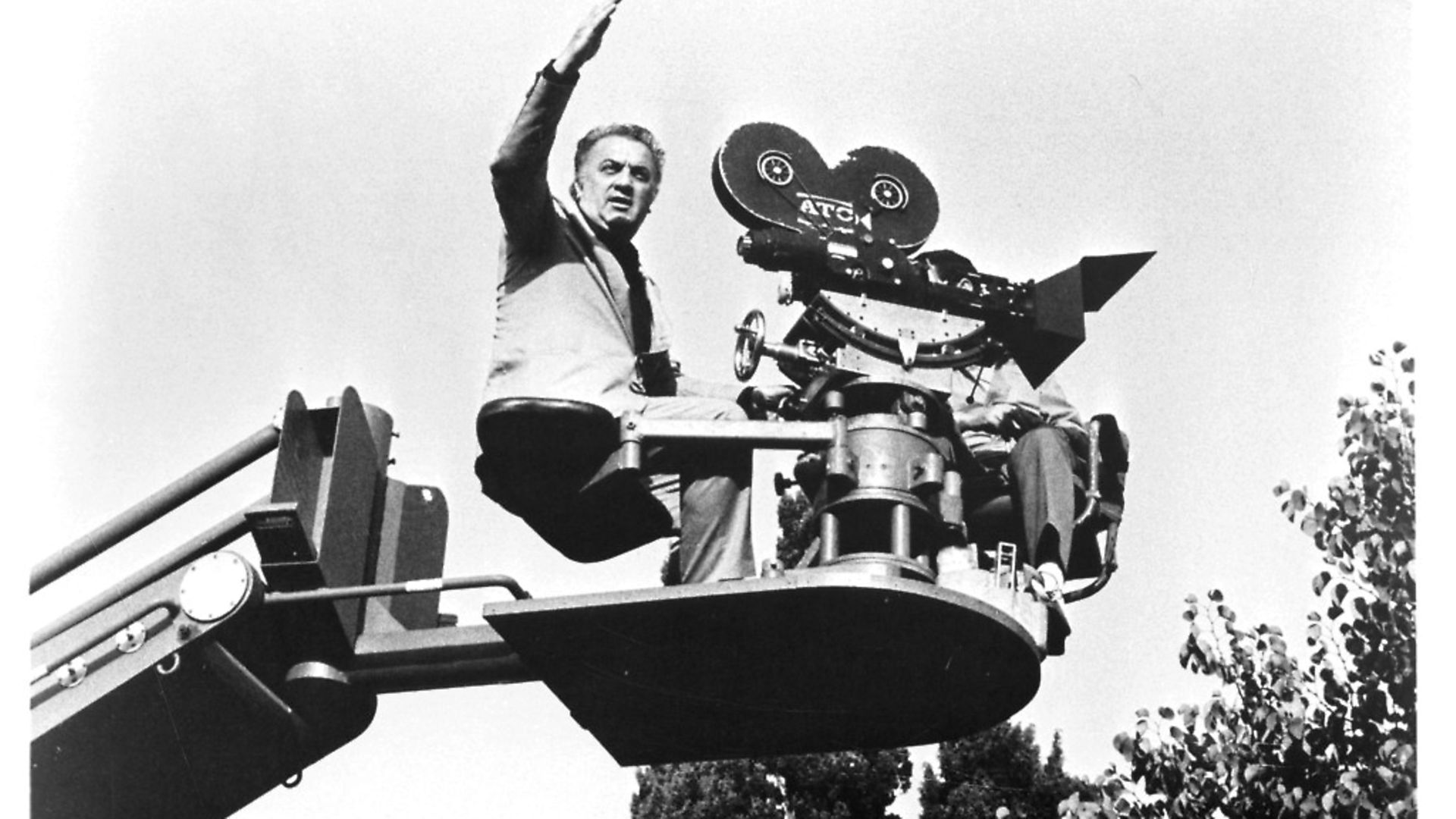
The series of events marking the centenery of Federico Fellini shows how his ebullient and vivid films belong to a different era, when cinema dared to be art. JAMES OLIVER reports.
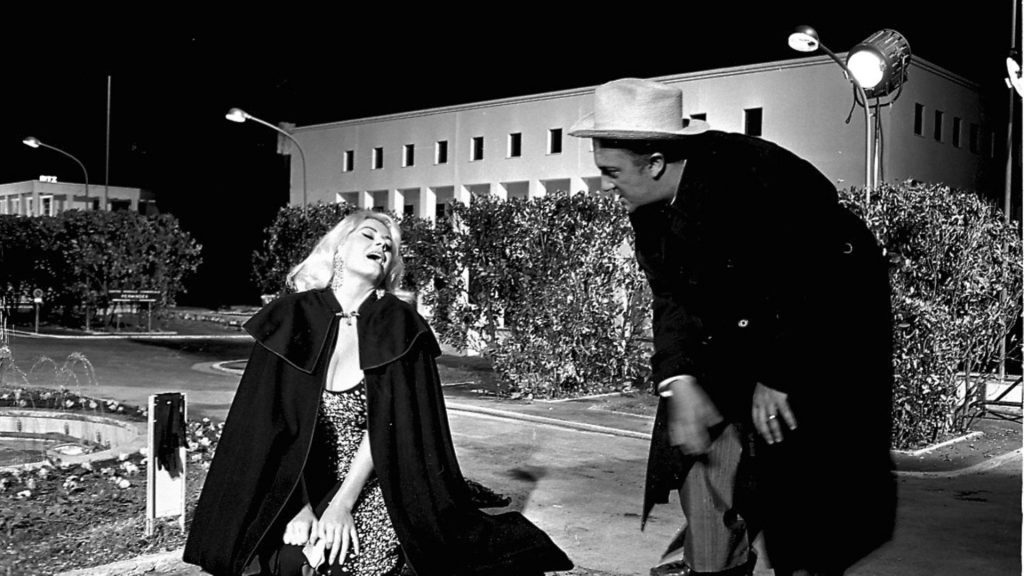
It says something about Federico Fellini that, when he died in 1993, the filmmaker’s body was placed in a film studio to lie in state just like royalty. It says just as much about the Italian people that they came in droves to shuffle tearfully past his earthly remains, heads bowed in tribute.
The spectacle, as many people noted at the time, was exactly like something from his films.
No director was more associated with that sort of outlandish pageantry, to the point that he even became an adjective (“Felliniesque – relating to, characteristic of, or reminiscent of Fellini, his films, or his style; often specifically: fantastic, bizarre; lavish, extravagant”).
This talent for excess manifested itself in some of most important, influential and just plain greatest films ever made, an influence on Spielberg, Scorsese, on Tim Burton too.
We shouldn’t need a reason to celebrate a great artist but this month offers a perfect excuse since it is his centenary, an anniversary being marked by a major retrospective at BFI Southbank, a UK-wide re-release of La Dolce Vita, and a tour of classic Fellini films to cinemas nationwide.
Federico Fellini arrived in this world on January 20, 1920, oldest child of a salesman. He was born and raised in the coastal resort of Rimini, a place he would return to – in his movies, at least – again and again, recreating a version of his younger life on screen.
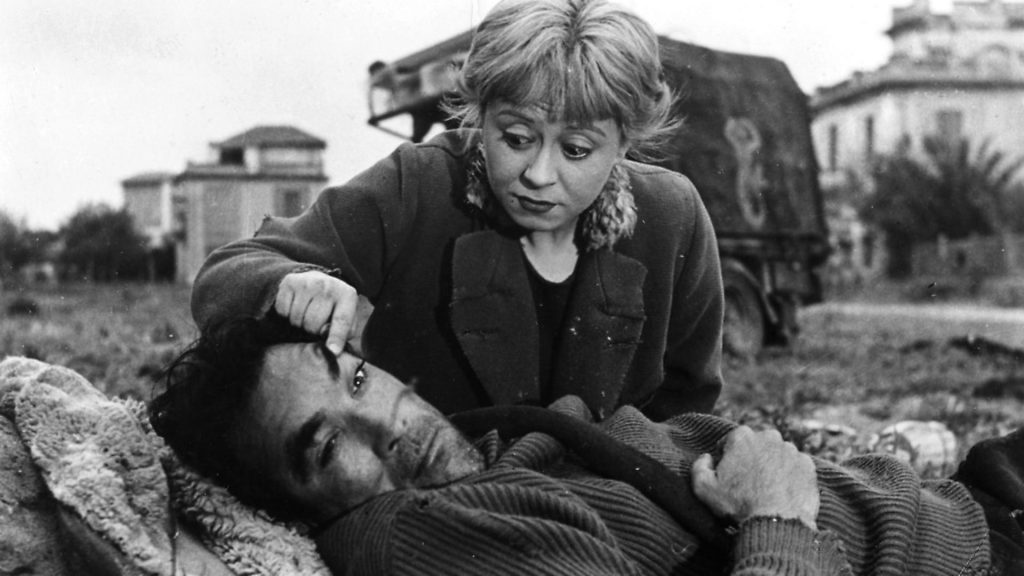
But while he would later display tremendous nostalgia for the home town, when he was actually living there he couldn’t wait to get away. Aged 18, he stepped on a train, first to Florence and then to Rome, to begin training as a lawyer.
Rome agreed with him immediately, its “gigantic rudeness and gigantic vulgarity” making him feel right at home. The law, though, did not and he dropped out from his course, scratching a living in journalism, that all purpose escape route for wastrels and ne’er-do-wells. Mussolini was in charge back then, and soon enough war would come but Fellini managed to avoid joining the army – his medical records were destroyed in a bombing raid, or so he claimed – and sat out the war on the home front.
He spent the duration working the showbiz beat, which gave him an excuse to go to the theatres and clubs he was attending anyway. It also took him to Cinecitta, the state-run film factory, to report on the escapism that the war-ravaged people needed so desperately. It was at Cinecitta that he became friendly with some film people. Sensing a born storyteller, one of them invited him to start contributing to a new project he was working on.
This, though, would not be escapism. Fellini’s patron was a man called Roberto Rossellini and he wanted to do something different. Made almost immediately after the fascists and their Nazi allies had been flushed out of Rome in 1943, Rossellini’s Rome, Open City told the truth about the brutality and cruelty of life during wartime.
Stripped of studio artifice and filmed on the streets, this was radically different to the glamour and glitz of commercial cinema. It proved enormously influential and other, similar, films soon followed: ‘neo-realism’ [‘new realism’] the critics called them.
Given his later fondness for the dressing up box, it’s sometimes difficult to remember that Fellini was one of the most important figures in neo-realism. He contributed to some of the most important films of the cycle, including Paisa (for Rossellini) and Without Pity (directed by Alberto Lattuada).
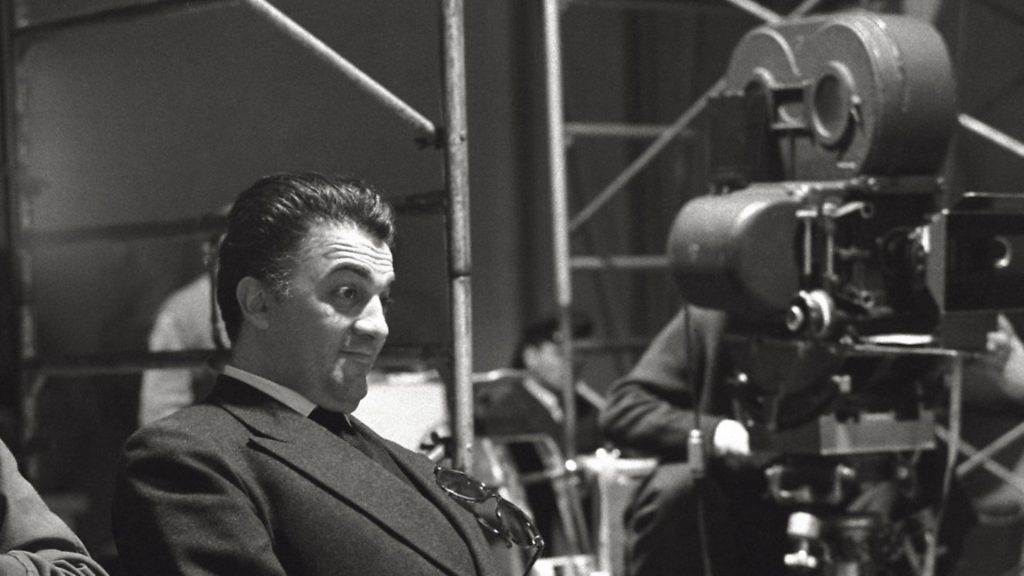
But he was never as politically committed as some of the neo-realists, nor as dedicated to showing lives at the bottom of the heap. Fellini’s first film, Variety Lights, (co-directed with Lattuada) was about a hapless travelling theatre troupe; his first solo effort, The White Sheik, concerns a frustrated woman who becomes a little too devoted to her favourite newspaper photo-romance (a genuine, and very popular, genre).
By the time of I Vitelloni, some critics were beginning to question Fellini’s commitment to neo-realism. I Vitelloni (it translates as something like ‘the veal calves’) is basically the younger Fellini’s life story: four youthful friends mooching around a seaside town, trying to chat up girls and stave off boredom until one of them heads for the big city.
The neo-realist true believers were even more shocked by La Strada (‘The Road’), the first of Fellini’s films to indulge his life-long love of the circus, which would become a recurrent source of imagery thereafter.
It is the story of Gelsomina, an otherworldly young woman whose family sell her to a brute called Zampano (played by visiting American star Anthony Quinn). He tours rural Italy doing a strong man act with the bullied, put upon Gelsomina acting as clown/drudge.
Gelsomina was played by Giulietta Masina, Fellini’s wife and most constant performer. They were wed in 1943, when she was a rising starlet and he a still-wet-behind-the-ears screenwriter and the marriage lasted until his death in 1993.
It was, though, a union that outsiders might struggle to understand, for Fellini was not only unfaithful, but everyone who saw his later work knew he was unfaithful: those movies are filled with very obvious stand-ins for the director having affairs (and, in fairness, feeling guilty). “The word marriage is not appropriate in our case,” said Masina in one interview. “It would be better to speak of […] two people who stay together by free choice.” She added: “He is an Italian man”.
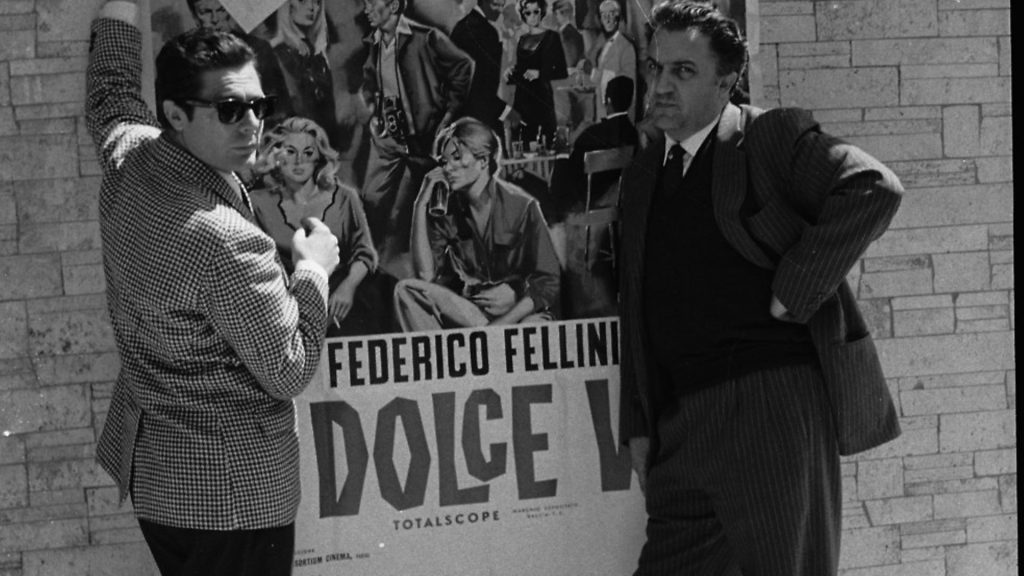
Fellini’s surrogates were usually played by the actor Marcello Mastroianni, who first worked with the director on La Dolce Vita; inspired by Italy’s post-war economic miracle and the preponderance of Hollywood stars in Rome – financial advantages meant many productions were shot there at that time – Fellini’s film is about a journalist (Mastroianni) who covers Fellini’s old gig on the showbiz desk. Marcello has aspirations to be a serious writer, even an intellectual, but the temptations of easy pleasure, from orgies to starlets in fountains, keep getting in his way.
Upon first release in 1960, it was a cause célèbre for its decadence. The Vatican took against it for a start and there was much tut-tutting about the flagrant immorality on display. It’s rather less shocking 60 years on but don’t think the film has dated. If anything, it’s even more relevant, for Fellini predicted a culture deformed by an obsession with celebrity and trivia, the new gods of a godless age.
The combination of shock value, critical acclaim and papal disapproval made La Dolce Vita a huge, era-defining hit. Everyone was desperate to know what Fellini would do next. And that included Fellini because he didn’t have a clue: he was suffering from an acute case of director’s block.
Inspiration finally struck at Cinecitta, when a technician told him how much he was looking forward to the next Fellini flick. The director had heard that many times, but the technician added something else: it would be Fellini’s eighth-and-a-half film, counting Variety Lights and a couple of shorts as fractions.
Suddenly everything clicked in to place. The resultant film – called 8½, obviously – would be an account of a film director (called Guido Anselmo and played by Mastroianni) struggling to follow up an enormous success and distracting himself with affairs and other diversions. But this was more than simple autobiography: Fellini would interweave dreams, childhood memories and wild fantasies that would earn comparisons with James Joyce and Ulysses.
It’s fair to say that nothing like this had been seen on screen before (it opens with Guido escaping from traffic gridlock by flying away) and it remains an overwhelming experience, at once exuberant and melancholic. It is obviously intensely personal film, and all the more compelling for it – the sequences between Guido and the wife who knows him only too well are very obviously drawn from life, as is the abundant self-pity. It is very ‘Felliniesque’ indeed.
And Fellini’s films would become ever more ‘Felliniesque’ thereafter, especially after he moved from black and white to colour. This excess was too much for some, for whom the later films are bloated and self-indulgent.
Still, an exception can usually be made for Amarcord. This is Fellini’s ultimate memory piece (the title derives from “Mi ricordo” (“I remember”) in the local dialect of Rimini). It’s set in an Italian seaside town in the 1930s and sees the director recalling the people and places of his youth with such warmth and generosity that it is near-impossible not to be moved.
Watching Fellini today can be a bittersweet experience. The films remain as wonderful as ever but it’s impossible not to be aware that such things simply could not be made today. Fellini worked in a time when it was obvious that cinema was art.
Hell – he did quite a lot to prove it. But fewer people take movies so seriously these days; films are altogether more conservative now, tidy and polite. And that’s surely the true value of these centenary celebrations; these films don’t just to show what a great director Fellini was but what the medium is capable of in the right hands – and how spectacular that can be. Grazie, Federico.
A Fellini retrospective plays at the BFI Southbank throughout January. A re-release of La Dolce Vita will be screened around the country.









